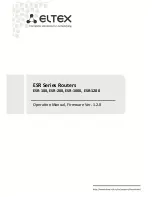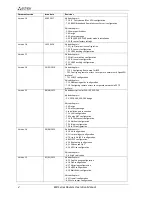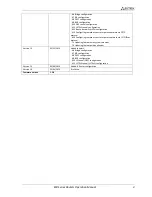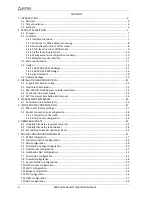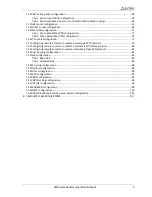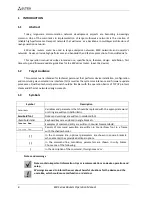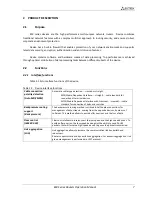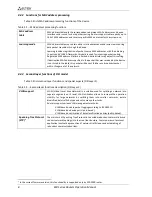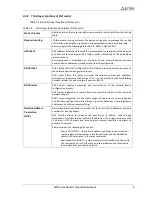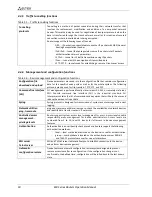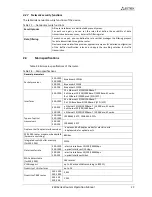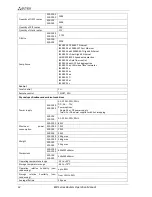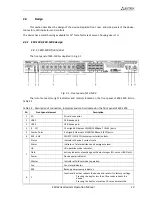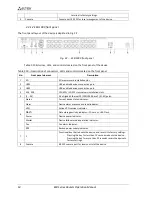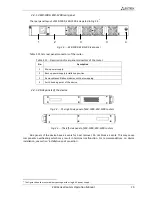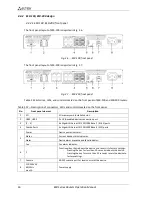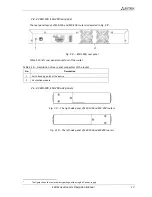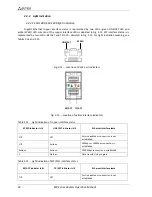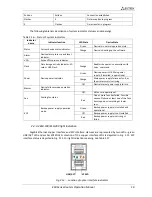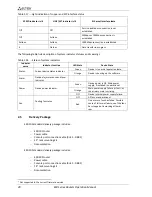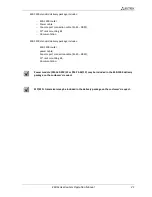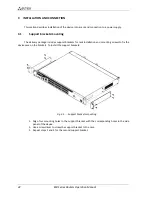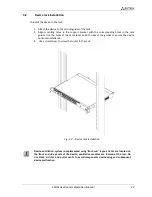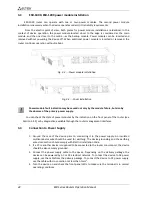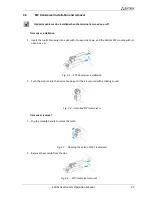
10
ESR Series Routers Operation Manual
2.2.5
Traffic tunnelling functions
Table 2.5
—
Traffic tunnelling functions
Tunnelling
protocols
Tunnelling is a method of packet conversion during their network transfer that
involves the replacement, modification and addition of a new packet network
header. This method may be used for negotiation of transport protocols when the
data is transferred through the transit network as well as for creation of secured
connections where tunnelled data is being encrypted.
Routers support the following types of tunnels:
–
GRE
—
IP packet is encapsulated into another IP packet with GRE (General
Routing Encapsulation) header
–
IPv4-IPv4
—
tunnel that encapsulates source IP packets into IP packets
with alternative network parameters
–
L2TPv3
—
tunnel for L2 traffic transmission using IP packets
–
IPsec
—
tunnel with the encryption of transmitted data
–
L2TP, PPTP
—
tunnels used for establishing a remote 'client-sever' access
2.2.6
Management and configuration functions
Table 2.6
—
Basic management and configuration functions
Configuration file
download and upload
Device parameters are saved into the configuration file that contains configuration
data for the specific device ports as well as for the whole system. The following
protocols may be used for file transfers: TFTP, FTP, and SCP.
Command line interface
(CLI)
CLI management is performed locally via serial port RS-232, or remotely via Telnet,
SSH. Console command line interface (CLI) is the industrial standard. CLI
interpreter contains the list of commands and keywords that will help the user and
reduce the amount of input data.
Syslog
Syslog protocol is designed for transmission of system event messages and event
logging.
Network utilities:
ping, traceroute
ping and traceroute utilities
allow you to check the availability of network devices
and identify data transfer routes in IP networks.
Controlled access
management
—
privilege levels
Routers support system access level management for users. Access levels enable
responsibility areas management for device administrators. Access levels are
numbered from 1 to 15; Level 15 stands for full access to device management
features.
Authentication
Authentication is a user identity check procedure. Routers support the following
authentication methods:
–
local
—
local user database stored on the device is used for authentication
–
group
—
user database is located on the authentication server RADIUS
and TACACS protocols are user for server interactions.
SSH server
Telnet server
SSH and
Telnet
server features allow you to establish connection to the device
and perform device management.
Automatic
configuration restore
Device features automatic configuration restore system designed to prevent
remote access loss after re-configuration. If the configuration change is not
confirmed in the defined time, configuration will be rolled back to the last known
state.

